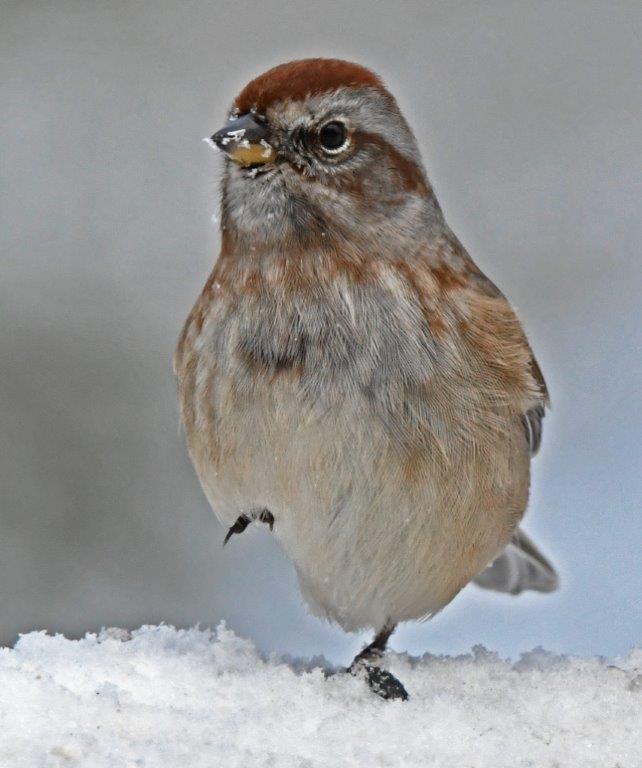Daily Updates
Snow, Ice, and Wildlife - UPDATE October 23, 2020
23 October 2020
Print Email
On this snowy day, sunflower seed hearts were popular. This pretty male red-breasted nuthatch paused just long enough to show me the seed he selected.Red-breasted nuthatch
Red-breasted nuthatch

An American tree sparrow that also stopped by for seeds is on its way from the Arctic Tundra of northern Canada to its winter grounds that cover all but the very southernmost part of the United States. American tree sparrow
American tree sparrow

As I snapped its picture out the window, it lifted its foot to tell me the snow was cold.
On the way to work, I snapped a picture of a lone loon that has been on Robinson Lake for days. The loon was about to become a center of attention. Someone else photographed it and posted its picture on ?What?s Up, Ely.? People were concerned because ice now covers over 90% of that lake, leaving the loon less and less area to feed up for migration. Shallow Robinson Lake is one of the first lakes to ice over each year.
The loon was small enough in my pictures that the posted portion represents less than 1% what the camera saw. Somehow, that dot turned out sharp enough to post.
In one of the pictures, the loon decided to show me its gigantic foot that helps it power after fish underwater faster than a person might believe.
Loon Loon

Common Loon

This adult loon is shedding its summer black and white breeding plumage with the fresh brown body and wing feathers that will carry it to the Atlantic Ocean or the Gulf of Mexico. Its head has turned brown on top, and its throat has become mostly white except for the black and white necklace that is still opening up in front to give it a full white throat for winter. The bill is starting to turn from black to white.
With the attention this loon got on the internet today, people will be watching to see when and if it leaves. I say ?it? because a person cannot tell if a loon is a male or a female from its plumage.
Thank you for all you do.
Lynn Rogers, Biologist, Wildlife Research Institute and North American Bear Center

 Author
Topic: Jewel and her cubs (Read 2378793 times)
Author
Topic: Jewel and her cubs (Read 2378793 times)
